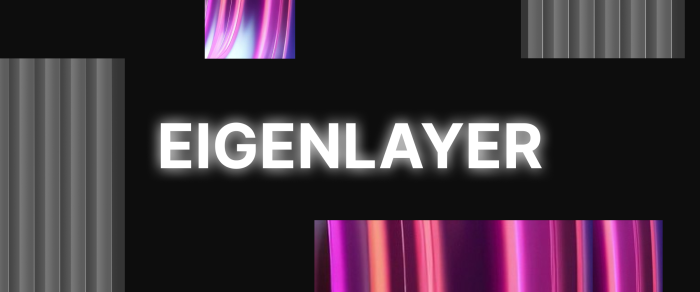Top 10 Crypto Staking Platforms in 2023
It’s important to handle cryptocurrency assets wisely. The “hold till it grows” strategy used by holders is as simple and reliable as possible, but it does not guarantee a capital gain in the long run. Crypto holders today have more promising strategies, and one of them is staking crypto. Staking is one of the most convenient ways to earn a relatively high income after the end of the cryptocurrency deposit lock-up for those investors who do not plan to engage in independent trading.
This article will tell you what crypto staking is and what types of earning exist today. In addition, you will learn about the advantages and disadvantages of crypto staking. Finally, we will tell you about the 10 best platforms for staking crypto.
Crypto Staking As a Way to Make Money
So, what is staking crypto? Let’s start with a general definition of staking. In the world of cryptocurrencies, this general name unites different investing methods, characterized by some common features: funds are placed in a digital wallet for a long period at a certain interest. During this time, they are used for various technical or financial tasks. After the end of the placement period, the investor receives his deposit back and income in the same or another currency, depending on the specific conditions.
According to Nasdaq, the total capitalization of tokens of all staking platforms was estimated at $633 billion last June. At the same time, blockchain funds accounted for only 24% of that volume, showing excellent earnings prospects.
This is confirmed by the behavior of major investors. For example, recently, Blockdaemon, which creates infrastructure for staking, attracted $28 million in one round of investment, and one of the world’s largest financial conglomerates, Goldman Sachs, invested in it, among other interested organizations. In addition, Swiss digital asset bank Sygnum, which has offered blockchain-staking services for Tezos before, announced that it would support Ethereum 2.0-staking.
Also, cryptocurrencies are seeing a boom in DeFi and tokens issued by independent platforms. Staking plays a big role in developing the new generation of crypto assets. The demand for staking is evidenced by the total number of assets placed on DeFi platforms. In U.S. dollars, this figure exceeds 30 billion.
Types of Crypto Staking
There are two types of staking: technical staking and staking on cryptocurrency exchanges (which in turn are divided into limited, decentralized, and open-ended)
- Technical Staking
One of the first to emerge was technical staking. Its idea is to confirm transactions in the network and add blocks to the blockchain of some cryptocurrencies through a network of validators, each of which must have a certain and quite large amount of coins on their account. The creators of the cryptocurrency Solana (SOL), whose total stake is currently equivalent to $35 billion, use roughly such a scheme.
- Staking on Cryptocurrency Exchanges
Staking on cryptocurrencies is much simpler, technically. A crypto exchange acts as a staking provider, temporarily blocking an investor’s deposit and charging him income at an agreed rate. In some cases, the exchange may not block the deposit, leaving the possibility of withdrawing it at any time, but this option is much less profitable. In this case, the exchange remains only an intermediary between the investor and the final organization, which uses the stake for its own purposes.
As mentioned above, this type of staking has several subtypes.
- Locked Staking
The user specifies in advance the period during which he will hold a digital asset on his account. It is impossible to increase this period. As a rule, this method assumes a high interest rate, that is, it allows you to get the maximum profit relatively quickly.
- Decentralized Staking
The user makes a bank deposit by holding funds in a wallet. These assets can be used by other participants for transactions. All platform processes are regulated by smart contracts and take place automatically.
- Flexible Staking
The contract is not limited to a specific period. That is, the user can terminate the cooperation and withdraw tokens from the wallet at any time of their choice. As soon as this happens, the interest accrual stops.
Advantages and Disadvantages of Crypto Staking
From the attractive returns that BTC staking often provides, it is clear why it has become so popular among cryptocurrency holders. In most cases, it gives them additional income from the assets in their accounts. In addition, thanks to examples of staggering 100 percent returns on some protocols, staking has firmly established its place in the cryptocurrency world. However, before diving into the staking world, let’s look at some of the crypto staking misconceptions, advantages and potential disadvantages you need to consider.
Here are some of the advantages of cryptocurrency staking:
- Passive Income
Yields can range from attractive to unbelievable and can provide consistent passive income with varying risk appetites.
- Low Entry Threshold
Staking is simple and can be done in a few simple clicks, especially on the major exchanges that now offer staking services. Users don’t need a huge amount of money to start staking, and staking is also energy efficient.
Like any other technology, staking also has its drawbacks. Let’s look at the main ones.
- The Possibility of Hacking/Cyber Attacks on a Protocol or Exchange
This is the main reason why some crypto investors are staking on hardware wallets.
- Dropping Coins’ Value Possibility
This is especially true in volatile market conditions. When coins are locked up for the duration of the staking period, you won’t be able to liquidate your assets if the price drops.
- Locking Risk
Validator nodes storing your tokens can be locked if they do not maintain 100% uptime when processing transactions.
Contrary to the common misconception that staking is a safe way to invest your money in crypto, it must be remembered that staking, being one of the simplest and most convenient tools for earning crypto, still carries certain risks that must be taken into account before starting to work with this system.
Top 10 Crypto Staking Platforms in 2023
So, now that you know what staking is and how it works, its advantages and disadvantages, it’s time to take a look at the 10 best staking crypto platforms that are in the crypto industry today. Are you ready? Here we go!
- Cosmos Network
Cosmos is a decentralized network or ecosystem of parallel blockchains based on the Tendermint consensus algorithm. The Cosmos network is also called the ”blockchain internet.”
The Cosmos Network solves the problem of blockchain isolation by providing a single infrastructure that allows them to interact. In other words, users can easily transfer tokens from one blockchain to another. This property is called interoperability. Inter Blockchain Communication (IBC), a protocol that enables strong communication between different blockchains, was developed to allow for interoperability.
- Ethereum (Serenity)
Ethereum is the second most capitalized crypto and the largest blockchain with smart contracts, with a huge infrastructure of decentralized applications. The platform leads in the number of applications and tokens issued, with a large community supporting it.
The platform is currently running on the PoW mechanism, but the Medalla test network on PoS has already been launched, with BETH coin staking — tokens that replace an equivalent amount of ETH — available. Holders can now stake Ethereum cryptocurrency and earn up to a 20% annual return on their investments, but the coins will be locked up for almost two years.
- Polygon Network
Polygon Network, formerly known as Matic, is a scalable, decentralized network that provides frameworks for creating a multichain ecosystem of Ethereum-compatible blockchains. The platform is also referred to as the “Ethereum blockchain internet.”
The Polygon platform solves blockchain scalability problems and slow and expensive transactions without compromising network security. The protocol works on the principle of modular “security-as-a-service” and resembles the Cosmos Network in structure, as it aims for blockchain interoperability, but in the Ethereum network.
- Polkadot
Polkadot is probably Polygon’s main competitor. Like Polygon, the Polkadot platform aims to scale the Ethereum network. The platform’s ecosystem consists of subchains, also known as the para chain. Polkadot’s main focus is to create a network of Ethereum-compatible blockchains that can communicate with each other, exchanging transactions and data.
Polkadot provides blockchain developers with a modular Parity Technologies` Substrate framework that allows them to select the components that are best suited for developing specific applications.
- Cardano
Cardano is the world’s first decentralized platform based on scientific research and empirical data. The platform is also known as the “Ethereum killer.” The protocol allows the creation and running of blockchain applications and smart contracts similar to Ethereum.
- Tron
Tron is another serious competitor to Ethereum with its own developed ecosystem, but with higher throughput: the Tron network can process about 2,000 transactions per second. Even though the Tron platform did not offer anything new to the blockchain community after Ethereum, it has a developed infrastructure, and Ripple Labs participated in the development of the protocol.
- Tezos
Tezos is an open blockchain protocol for assets and applications, according to the platform’s official website. The platform is based on the Proof-of-Stake consensus mechanism, which allows validators and their delegates to generate revenue from XTZ staking.
A critical feature of the Tezos blockchain is its ability to self-correct and change its protocol structure over time. In terms of functionality, Tezos does not differ much from its competitors, Ethereum, Tron, or Cosmos: the protocol supports smart contracts and allows the development of blockchain applications (DApps) on top of it.
- EOS
EOS is a blockchain platform designed to create decentralized applications of any scale.
EOS is a carefully calculated project fueled by the faith of a community needing a quality new product in the blockchain market. It is safe to assume that EOS accumulates and uses the experience of many successful products. Against this background, one can be confident in its reliability and stability in the future.
- Avalanche
Avalanche is an open-source, non-custodial protocol for interest on deposits and loaned assets. The protocol’s own token is called AVAX and serves as a management token, allowing the community to collectively determine the direction of the protocol.
AVAX owners can put their assets on a security module to increase the protocol’s security and earn rewards. In the event of a deficit, up to 30% of a user’s share can be reduced to cover the deficit, providing an additional layer of security for the protocol.
- Near Protocol
Near is a Proof-of-Stake blockchain that launched its core network in 2020. It is a decentralized development platform designed to provide an ideal environment for DApps, overcoming some of the limitations of competing systems (e.g., low bandwidth, low speed and poor cross-compatibility).
Conclusion
Crypto staking is a popular way to generate passive income in the market, but there are other ways. The volatility of the crypto market introduces its own adjustments to staking profits. It’s essential to keep in mind that there are several risks associated with staking. For example, by locking coins, you earn a number of coins, but their price may fall, and you will be at a loss. Before choosing a platform for staking crypto, carefully study the terms and possible risks.



